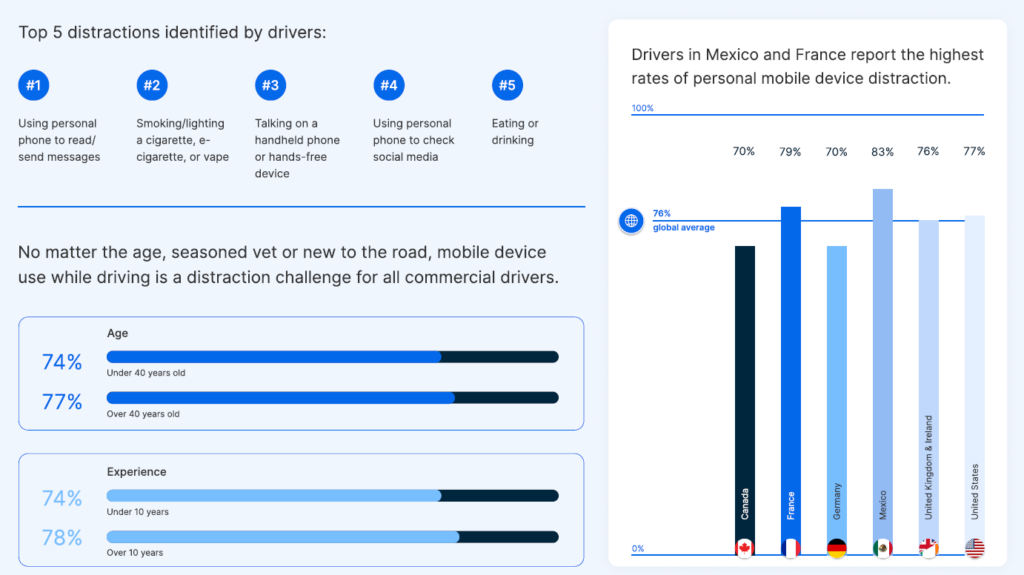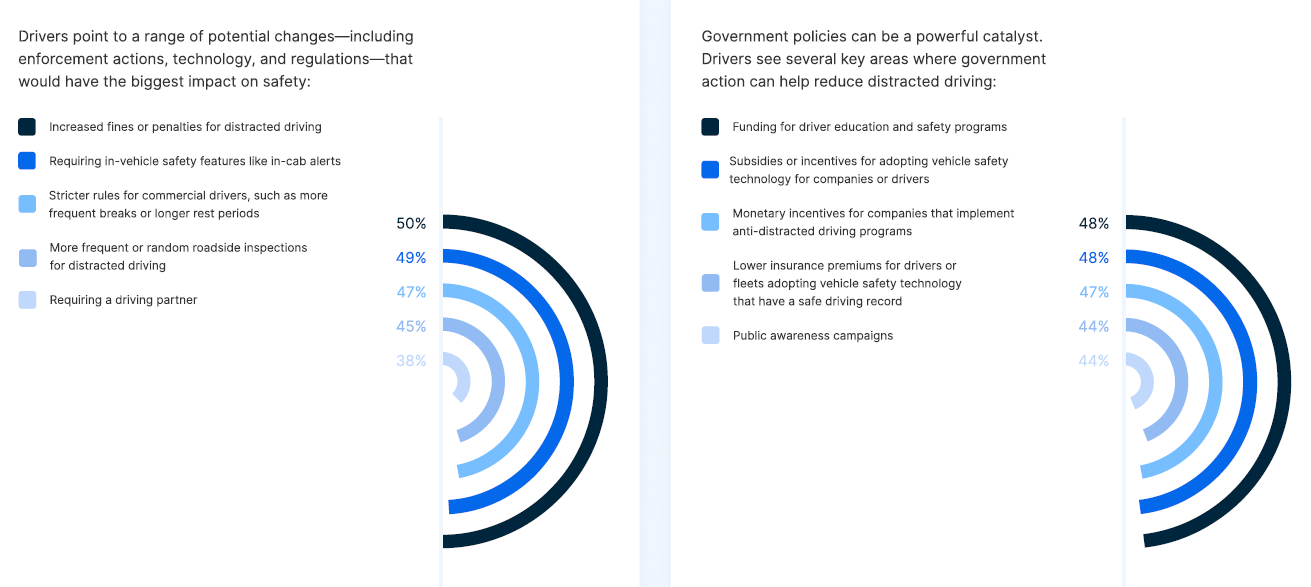Eighty-five percent of commercial drivers in Canada experienced a near-miss or “close call” due to distracted driving in the past year—higher than the global average of 79%, according to Samsara.
Based on a survey of 1,550 commercial drivers across seven countries, including 150 in Canada, the report outlined smoking cigarettes, e-cigarettes, or vaping, checking phones for social media and communication as the most common causes of distraction.
More than 90% of all surveyed drivers said they’ve personally experienced the consequences of distracted driving, including vehicle damage, personal injury, license suspension, fines, and increased insurance costs.

Mobile phone use was cited as the most common cause of distraction, with 76% of drivers globally admitting to being distracted by personal devices while on the road. However, the report also found that 74% of drivers use phones or other tech for work-related tasks, highlighting the need for fleets to provide safer alternatives. This is why surveyed drivers said their employers could help reduce distraction by improving communication systems to reduce calls and messages, offering better in-cab navigation, and implementing fatigue management training.
In Canada, 97% of drivers said they’re more likely to stay with companies that implement proactive distracted driving prevention programs. Positive reinforcement was seen as more effective than punishment, with 82% preferring recognition or incentives over disciplinary measures. Canada reported a distraction rate of 70%, the lowest of countries surveyed, alongside Germany.
Coaching and training programs are already common — Canadian and American drivers are leading the way, with 97% reporting they’ve received targeted education and 93% saying it improved their driving habits. Dashcam footage was also seen as a powerful awareness tool—93% said it helped them recognize distracted behaviors, and 60% reported changing their habits after reviewing footage of themselves.
Onboard safety systems are also seen as a critical tool in reducing distraction. Sixty-five percent of drivers globally said they trust systems that monitor for distraction and issue real-time alerts—but support is even stronger in Canada, which reported the highest level of driver buy-in for this technology (73%) among all regions surveyed, with the average rate of 65%.

The most in-demand safety solution among drivers globally is AI-powered detection with real-time alerts. Drivers also expressed support for features like hands-free communication systems and automatic blocking of non-essential notifications, along with stronger safety policies and government incentives for adopting vehicle safety technology.
“Our experience with customers consistently demonstrates the transformative impact of AI dash cams and comprehensive safety programs,” said Evan Welbourne, head of AI and data at Samsara, in a related news release. “By combining advanced technology with positive recognition and proactive coaching, organizations can significantly reduce distracted driving incidents and cultivate a safer, more engaged driver workforce for the long term. These tools provide invaluable insights, enabling targeted training and fostering a culture of safety that benefits both drivers and the broader community.”